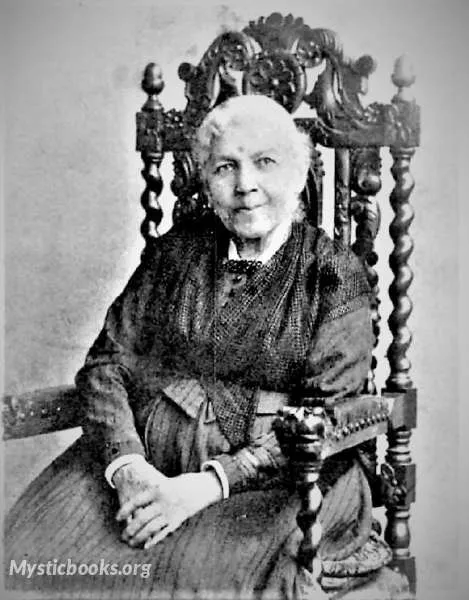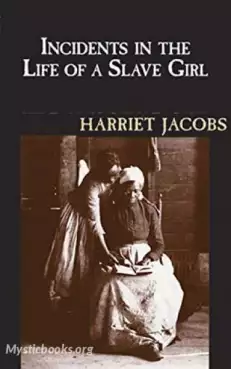
Timeline
Title
Country/Nationality
Harriet Jacobs
Harriet Jacobs was an African-American writer, whose autobiography, Incidents in the Life of a Slave Girl, published in 1861 under the pseudonym Linda Brent, is now considered an "American classic". Born into slavery in Edenton, North Carolina, she was sexually harassed by her enslaver. When he threatened to sell her children if she did not submit to his desire, she hid in a tiny crawl space under the roof of her grandmother's house, so low she could not stand up in it. After staying there for seven years, she finally managed to escape to the free North, where she was reunited with her children Joseph and Louisa Matilda and her brother John S. Jacobs. She found work as a nanny and got into contact with abolitionist and feminist reformers. Even in New York, her freedom was in danger until her employer was able to pay off her legal owner.
During and immediately after the Civil War, she went to the Union-occupied parts of the South together with her daughter, organizing help and founding two schools for fugitive and freed slaves.
Harriet Jacobs was born in 1813 in Edenton, North Carolina, to Delilah Horniblow, enslaved by the Horniblow family who owned a local tavern.
When Jacobs was six years old, her mother died. She then lived with her owner, a daughter of the deceased tavern keeper, who taught her not only to sew, but also to read and write. Only very few slaves were literate, although it was only in 1830 that North Carolina explicitly outlawed teaching slaves to read or write. Although Harriet's brother John succeeded in teaching himself to read, he still wasn't able to write when he escaped from slavery as a young adult.
Norcom soon started harassing Jacobs sexually, causing the jealousy of his wife. When Jacobs fell in love with a free black man who wanted to buy her freedom and marry her, Norcom intervened and forbade her to continue with the relationship. Hoping for protection from Norcom's harassment, Jacobs started a relationship with Samuel Sawyer, a white lawyer and member of North Carolina's white elite, who would some years later be elected to the House of Representatives. Sawyer became the father of Jacobs's only children, Joseph (born 1829/30) and Louisa Matilda (born 1832/33). When she learned of Jacobs's pregnancy, Mrs. Norcom forbade her to return to her house, which enabled Jacobs to live with her grandmother. Still, Norcom continued his harassment during his numerous visits there; the distance as the crow flies between the two houses was only 600 feet (180 m).
In April 1835, Norcom finally moved Jacobs from her grandmother's to the plantation of his son, some 6 miles (9.7 km) away. He also threatened to expose her children to the hard life of the plantation slaves and to sell them, separately and without the mother, after some time. In June 1835, Harriet Jacobs decided to escape. A white woman, who was a slaveholder herself, hid her at great personal risk in her house. After a short time, Jacobs had to hide in a swamp near the town, and at last she found refuge in a "tiny crawlspace" under the roof of her grandmother's house. The "garret" was only 9 feet (2.7 m) by 7 feet (2.1 m) and 3 feet (0.91 m) at its highest point. The impossibility of bodily exercise caused health problems which she still felt while writing her autobiography many years later. She bored some small holes into the roof, so that fresh air and some light could enter into her garret. The light was barely sufficient to sew and to read the Bible and newspapers.
In 1843 Jacobs heard that Norcom was on his way to New York to force her back into slavery, which was legal for him to do everywhere inside the United States. She asked Mary Willis for a leave of two weeks and went to her brother John in Boston. John Jacobs, in his capacity as personal servant, had accompanied his owner Sawyer on his marriage trip through the North in 1838. He had gained his freedom by leaving his master in New York. After that he had gone whaling and had been absent for more than three years. From Boston, Harriet Jacobs wrote to her grandmother asking her to send Joseph there, so that he could live there with his uncle John. After Joseph's arrival, she returned to her work as Imogen Willis's nanny. Her work with the Willis family came to an abrupt end in October 1843, when Jacobs learned that her whereabouts had been betrayed to Norcom. Again, she had to flee to Boston, which where the strength of the abolitionist movement guaranteed a certain level of security. Moving to Boston also gave her the opportunity to take her daughter Louisa Matilda from the house of Sawyer's cousin in Brooklyn, where she had been treated not much better than a slave.
After her return from England, Jacobs retired to private life. In Cambridge, Massachusetts, she kept a boarding house together with her daughter. Among her boarders were faculty members of nearby Harvard University. In 1873, her brother John S. returned to the U.S. together with his English wife, their son Joseph and two stepchildren to live close to his sister in Cambridge. He died in December of the same year, 1873. In 1877 Harriet and Louisa Jacobs moved to Washington, D.C., where Louisa hoped to get work as a teacher. However, she found work only for short periods. Mother and daughter again took to keeping a boarding house, until in 1887/88 Harriet Jacobs became too sick to continue with the boarding house. Mother and daughter took on odd jobs and were supported by friends, among them Cornelia Willis. Harriet Jacobs died on March 7, 1897 in Washington, D.C., and was buried at Mount Auburn Cemetery in Cambridge next to her brother. Her tombstone reads, "Patient in tribulation, fervent in spirit serving the Lord". (Cf. Epistle to the Romans, 12:11–12)
Books by Harriet Jacobs

Incidents in the Life of a Slave Girl, Written by Herself
Incidents in the Life of a Slave Girl, written by herself is an autobiography by Harriet Jacobs, a mother and fugitive slave, published in 1861 by L. Maria Child, who edited the book for its author. Jacobs used the pseudonym Linda Brent. The book doc...